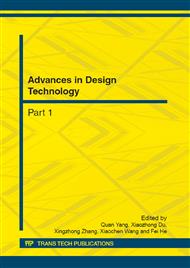p.1180
p.1186
p.1191
p.1197
p.1201
p.1205
p.1209
p.1213
p.1219
Further Exploring CFD-Based Gust Response of the Powered Parachute
Abstract:
Researched the longitudinal model of the powered parachute , and dynamic numerical simulated the entire gust response in FLUENT . In the experiment, set of three different cycles that with different ranges of the oscillation over the same period by the dynamic mesh. Analyzed and compared the motion parameters against the steady-state, the same period oscillatory motion can effectively ease the impact on the aerodynamic characteristics. The simulation show that: the active exercise of reasonable design parafoil can inhibit the unsteady aerodynamic interference caused by the gust.
Info:
Periodical:
Pages:
1201-1204
Citation:
Online since:
November 2012
Authors:
Keywords:
Price:
Сopyright:
© 2012 Trans Tech Publications Ltd. All Rights Reserved
Share:
Citation:


